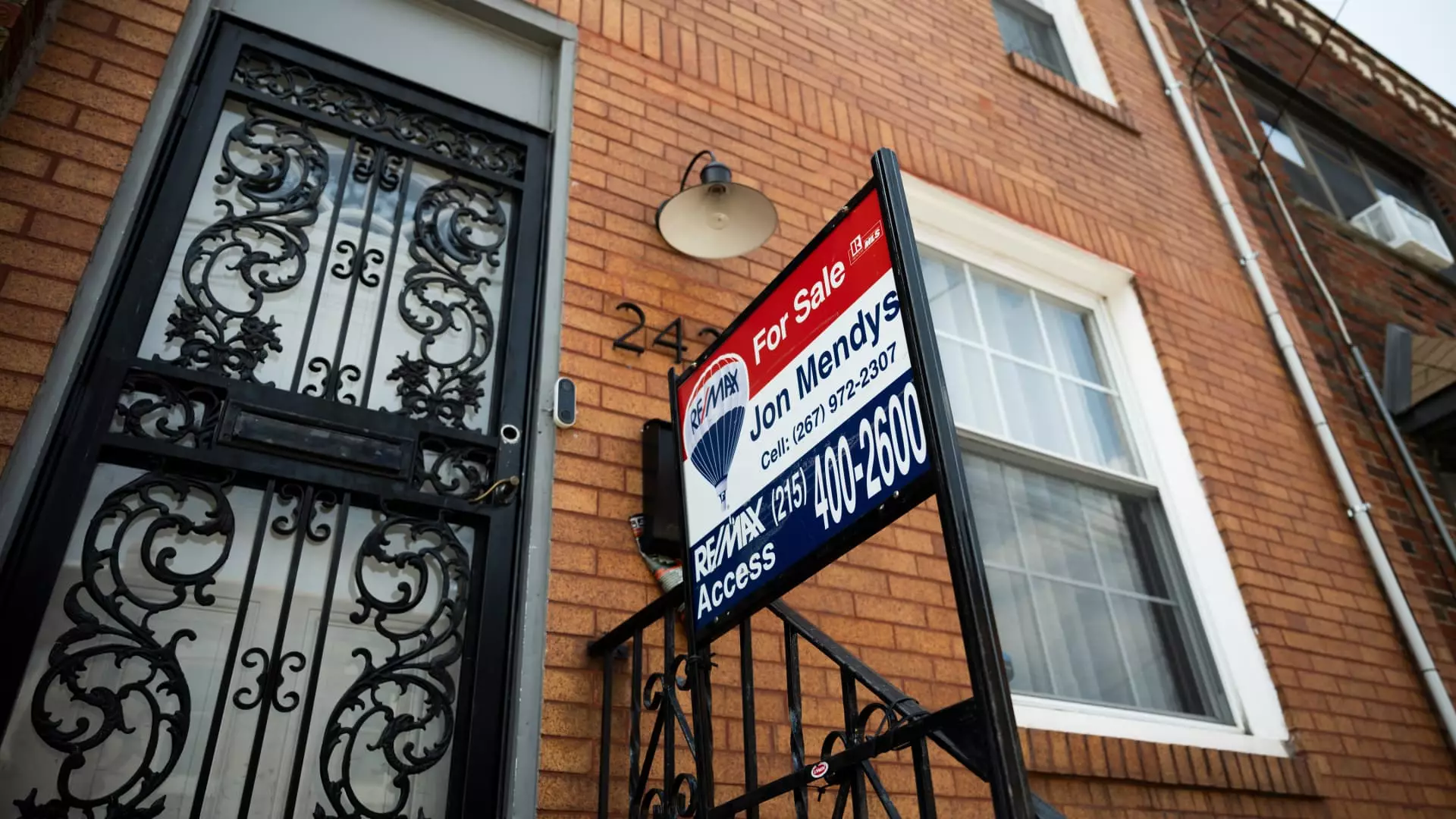The U.S. housing landscape is facing turbulent times, characterized by a host of challenges that have left both buyers and sellers grappling with an uncertain market. As we delve into the evolving dynamics, it becomes evident that high mortgage rates, inflated home prices, and limited housing inventory are pressing concerns that continue to disturb the equilibrium of this vital sector.
Recent data released by the National Association of Realtors (NAR) highlights a noteworthy 4.9% decrease in the sales of previously-owned homes for January, hitting a seasonally-adjusted annualized rate of 4.08 million units. This drop comes as a stark contrast to analysts’ predictions, which anticipated a modest decline of 2.6%. Although this data shows an increase of 2% compared to January of the previous year, current sales levels remain alarmingly close to a 15-year low. The figures point to a market significantly influenced by external factors, particularly the persistent high mortgage rates which hovered above 7% but fell to the 6% range, likely impacting contract signings from late November and December.
One of the major culprits at play remains the stubbornness of mortgage rates. They have largely remained constant despite a series of short-term interest rate cuts mandated by the Federal Reserve. As Lawrence Yun, the chief economist at NAR, pointed out, this rigidity has created a severe affordability crisis. With elevated home prices persisting, potential homeowners are deterred from entering the market, resulting in a substantial drop in buyer participation. As if stuck in a quagmire, prospective buyers find themselves unable to secure affordable financing without a meaningful shift in mortgage rates.
While the housing inventory saw a slight uptick, with 1.18 million homes available at the end of January—an increase of 3.5% from December and 17% year-over-year—the supply remains critically low when measured against a balanced market standard. A healthy housing market typically maintains a 6-month supply, but the current level is merely 3.5 months, further complicating the landscape for potential buyers. Additionally, the average time homes spent on the market reached 41 days, the longest duration since January 2020, reflecting an increasing reluctance among buyers to engage with the current pricing structure.
The median price of sold homes in January reached an unprecedented level of $396,900, marking a 4.8% increase compared to the previous year. All regions surveyed by NAR recorded price escalations, underscoring the intense competition that remains despite dwindling sales. Around 15% of homes were sold above their listing prices; these figures have remained relatively stable, indicating that some buyers are still willing to engage at elevated price points, albeit with caution.
A compelling statistic arises when considering the nature of transactions in the current market; all-cash purchases accounted for 29% of January sales, representing a historically high level, albeit a slight decline from 32% the previous year. The reliance on cash transactions paints a vivid picture of a market increasingly dominated by affluent buyers who are less affected by rising interest costs. Conversely, first-time buyers are still facing daunting obstacles with their representation remaining stagnant at 28%, a figure that substantially trails historical norms of approximately 40%.
Interestingly, while the market for lower-priced homes (under $250,000) saw a year-over-year decrease of 1.2%, sales of homes priced above $1 million surged by nearly 27%. This disparity hints at two divergent worlds within the housing market—one of affluent buyers navigating towards luxury properties and another of lower-income prospective buyers being left behind amid rising prices.
The U.S. housing market stands at a crossroads, filled with challenges that require a multifaceted approach to address. The inconsistent mortgage rates alongside high home prices can only be seen as a deterrent for potential buyers. Although inventories are slowly increasing, the concerns surrounding pricing and affordability undermine any potential advantages. As we look to the future, the market’s ability to adapt will be crucial in determining how swiftly it can recover and pave the way for renewed participation from a broader base of consumers.

